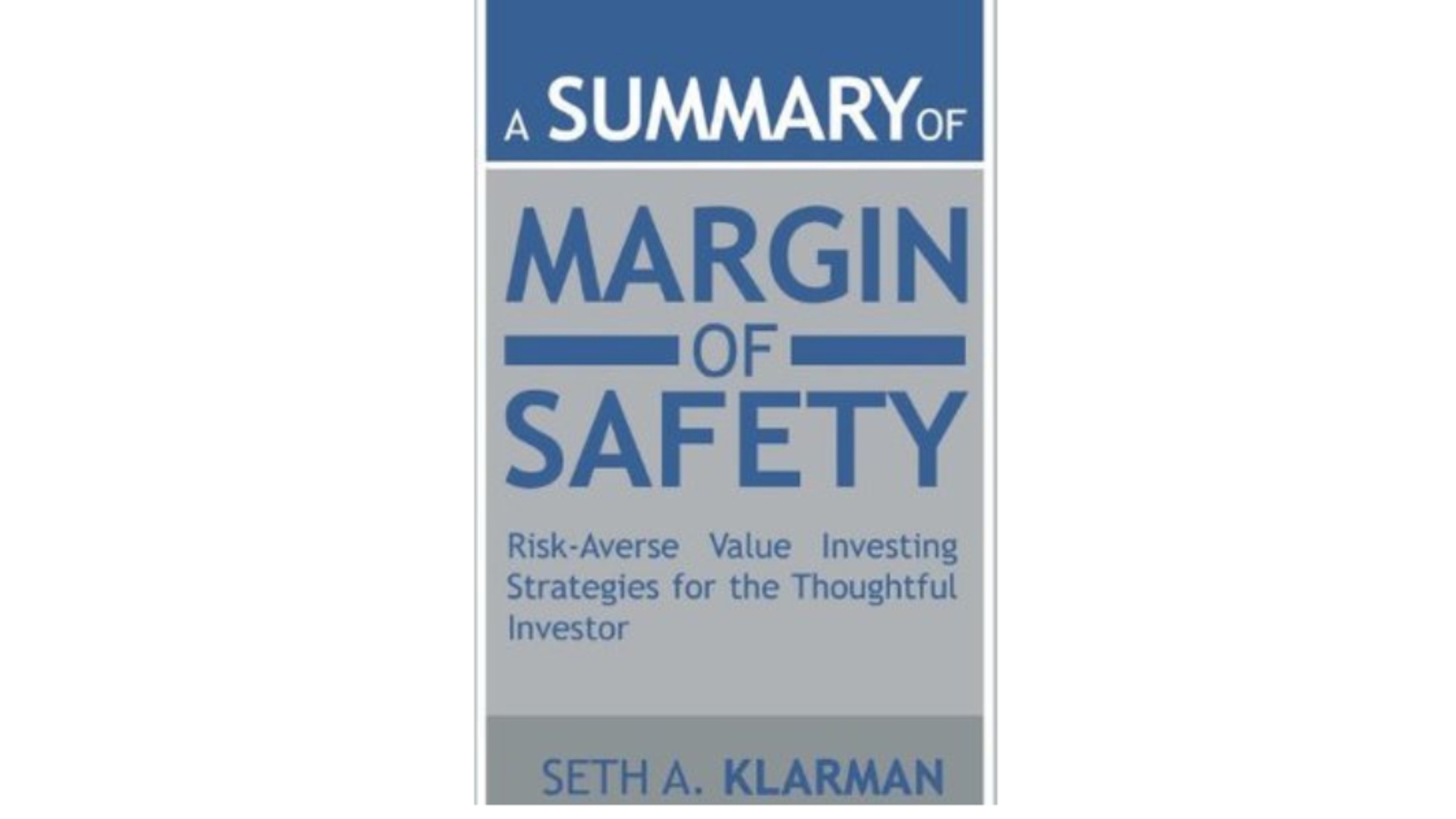Seth A. Klarman, a successful investor and founder of the Baupost Group, wrote the book “Margin of Safety: Risk-Averse Value Investing Strategies for the Thoughtful Investor”. I am unable to offer you a detailed explanation of the book’s contents, but I can give you a broad overview of its major topics and ideas.
The emphasis of the book is on value investing and the value of having a margin of safety while making investments. The following significant topics are often discussed in the book:
1. Margin of Safety: According to Klarman, this idea refers to purchasing assets at a substantial discount to their intrinsic value. This strategy seeks to guard against potential negative risk and provide a buffer for possible valuation errors.
2. Value Investing Principles: In this section, Klarman examines the value investing tenets, which include finding undervalued assets and making long-term investments. He talks about fundamental analysis, determining a company’s competitive advantage, and the value of extensive study while making investment decisions.
3. Risk Management: The book explores risk management methods and capital preservation measures. Diversification, rigorous risk assessment, and identifying and managing potential risks in investing are all points that Klarman emphasizes.
4. Market Psychology: In this section, Klarman talks about how investor behavior and market psychology might affect financial decisions. He emphasizes how market cycles, irrational exuberance, and investor emotions all contribute to market swings and possibilities for value investors.
5. Investment techniques: Various investment techniques used by Klarman, such as distressed debt investing, special situations investing, and opportunistic investing, may be covered in the book. It might shed light on how Klarman employs these techniques and integrates them into his general investment strategy.
The book is highly acclaimed in the investment community, but it is rare and challenging to find, it should be noted. Because of this, comprehensive summaries and snippets might not be generally accessible. I advise getting a copy from a dependable retailer or looking into alternate sources, including investment forums or articles outlining the main ideas and insights from “Margin of Safety,” to get a more thorough knowledge of the book’s content.
The Book in 3 Sentences
1. Margin of Safety: The book places a strong emphasis on the value of purchasing investments at a substantial discount to their intrinsic value, which offers a margin of safety against any downside risks.
2. Value Investing Principles: In this chapter, Klarman examines value investing’s guiding principles, emphasizing basic analysis, a long-term outlook, and comprehensive research to find undervalued assets.
3. Risk Management: This section of the book explores risk management strategies, such as disciplined risk assessment, diversification, and identifying and controlling potential risks in investing decisions.
Impressions
1. Depth of Knowledge: You have to appreciate the depth of knowledge and expertise displayed by Seth A. Klarman. The book is often praised for its thorough analysis of value investing principles and the practical insights shared by the author.
2. Emphasis on Risk Management: One common impression is the book’s emphasis on risk management and the importance of preserving capital. I find Klarman’s approach to assessing and managing risks as a valuable perspective that distinguishes successful value investors.
3. Margin of Safety Concept: The concept of a margin of safety resonates strongly with me. Klarman’s explanation of buying assets at a significant discount to their intrinsic value is often regarded as a key takeaway from the book, highlighting the importance of protecting against potential downside risks.
4. Real-World Examples: I appreciated the inclusion of real-world examples and case studies that help illustrate the application of value investing principles. These examples provide practical insights and make the concepts more relatable.
5. Influence on Value Investing Community: “Margin of Safety” has gained a reputation as a cult classic among value investors, and it has had a significant impact on the investment community. Many investors consider it a must-read for those interested in value investing.
How I Discovered It
The book “Margin of Safety: Risk-Averse Value Investing Strategies for the Thoughtful Investor” by Seth A. Klarman gained popularity through word-of-mouth recommendations and its reputation within the investment community. I found it though the same.
Who Should Read It?
“Margin of Safety: Risk-Averse Value Investing Strategies for the Thoughtful Investor” by Seth A. Klarman is recommended for individuals interested in value investing and those seeking to enhance their understanding of investment principles. Here are the key groups of people who may benefit from reading this book:
1. Aspiring Investors: Individuals who are new to investing or seeking to develop a strong foundation in investment principles can find value in this book. It provides insights into the mindset, strategies, and techniques of successful value investors, offering guidance on how to approach investment decisions with a long-term perspective.
2. Value Investors: The book is particularly relevant for value investors who aim to identify undervalued assets and seek a margin of safety in their investments. It delves into the concepts, techniques, and strategies employed by value investors, helping readers refine their investment approach and decision-making process.
3. Financial Professionals: Financial advisors, portfolio managers, and other professionals in the finance industry can benefit from the book’s insights. It offers a comprehensive understanding of risk management, fundamental analysis, and the importance of a margin of safety, which can enhance their ability to assess investments and provide sound financial advice.
4. Business Students and Professionals: Students studying finance, business, or related fields can gain valuable knowledge from the book. It provides practical examples and case studies, allowing them to apply investment principles and understand how financial markets operate in the real world. Additionally, professionals in finance-related roles can benefit from the book’s insights to refine their investment strategies.
5. Experienced Investors: Even experienced investors can find value in “Margin of Safety.” It offers a fresh perspective on risk management, investment psychology, and the importance of disciplined decision-making. The book may serve as a reminder of core investment principles and provide insights to refine existing strategies.
How the Book Changed Me
After reading “Margin of Safety: Risk-Averse Value Investing Strategies for the Thoughtful Investor” by Seth A. Klarman, I experienced changes in my investment approach and mindset. Here are some ways in which I changed after reading the book:
1. Focus on Margin of Safety: I developed a heightened appreciation for the concept of a margin of safety. I become more cautious and disciplined in my investment decisions, seeking opportunities where the price of an asset is significantly below its intrinsic value. This focus on risk mitigation can lead to a more conservative and thoughtful approach to investing.
2. Enhanced Risk Management: The book emphasizes the importance of risk management and capital preservation. I become more diligent in assessing and managing risks associated with my investments. I paid closer attention to factors such as company fundamentals, competitive advantages, industry dynamics, and potential pitfalls, incorporating a more thorough risk assessment into my investment process.
3. Long-Term Perspective: “Margin of Safety” promotes a long-term perspective in investing. I enhanced focus from short-term market fluctuations to the underlying value and potential of their investments over an extended time horizon. This led to increased patience and a reduced tendency to react impulsively to market volatility.
4. Deeper Research and Due Diligence: The book encourages thorough research and analysis. I was inspired to delve deeper into their investment research, studying company financials, industry trends, and competitive landscapes more extensively. This commitment to diligent research enhanced my ability to identify undervalued assets and make informed investment decisions.
5. Skepticism and Independent Thinking: “Margin of Safety” encourages readers to think independently and critically. After reading the book, I become more skeptical of market trends, popular investment fads, and consensus opinions. This developed a greater sense of self-reliance and I became more inclined to conduct my own analysis, challenging prevailing market narratives.
My Top Quotes
1. “The stock market is filled with individuals who know the price of everything, but the value of nothing.” – Philip Fisher
2. “Price is what you pay. Value is what you get.” – Warren Buffett
3. “Investing should be more like watching paint dry or watching grass grow. If you want excitement, take $800 and go to Las Vegas.” – Paul Samuelson
4. “Investing is not about beating others at their game. It’s about controlling yourself at your own game.” – Benjamin Graham
5. “The stock market is a device for transferring money from the impatient to the patient.” – Warren Buffett

